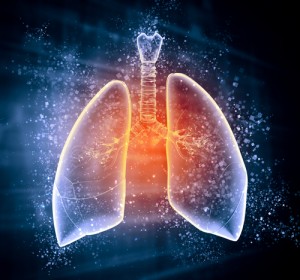 A means to detect dyspnea, or shortness of breath, using proteins and microRNA would allow afflicted individuals to seek the care they need before greater problems emerge. A study conducted by researchers at Pacific Northwest National Laboratories, San Antonio Military Medical Center, and Institute for Systems Biology identified candidate biomarkers in soldiers following deployment to Iraq or Afghanistan.
A means to detect dyspnea, or shortness of breath, using proteins and microRNA would allow afflicted individuals to seek the care they need before greater problems emerge. A study conducted by researchers at Pacific Northwest National Laboratories, San Antonio Military Medical Center, and Institute for Systems Biology identified candidate biomarkers in soldiers following deployment to Iraq or Afghanistan.
“Protein and microRNA Biomarkers from Lavage, Urine, and Serum in Military Personnel Evaluated for Dyspnea” examined 47 soldiers enrolled in the Study of Active Duty Military Personnel for Environmental Dust Exposure (STAMPEDE). Within this sample, 70 differentially expressed proteins were found in the patients in comparison to fifteen individuals with no diagnosis of lung disorder. Only six could be identified in both urine and lavage.
There was one group of patients who expressed a characteristic set of proteins, and another who expressed characteristic microRNAs. One microRNA was overexpressed in serum, lavage, and urine of patients with dyspnea, suggesting an important role of the molecule in lung disorder. Several other microRNAs were directly associated with clinical measures of lung health, including forced vital capacity and gas exchange efficiency.
[adrotate group=”3″]
To make these findings, soldiers and healthy participants underwent fiber-optic bronchoscopy with bronchoalveolar lavage and gave samples of urine and blood. These examinations were conducted because clinical findings from STAMPEDE indicated the presence of underlying diagnoses of airway hyperreactivity, asthma, low diffusivity of carbon monoxide, and abnormal cell counts that may have led to dyspnea. By looking for underlying molecular biomarkers that are readily obtained in the clinic, the researchers provided options for further studies to identify a means for detecting lung diseases including dyspnea and potentially asthma and emphysema.

